Volume 1-8 (2009-16)
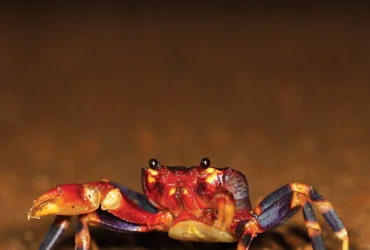 v7i1.164
v7i1.164ISSN: 1800-427X (print)
eISSN: 1800-427X (online)
DOI:10.47605/tapro.v7i1.164
Submitted date: 30 May 2014
Accepted date: 16 July 2014
Published date: 19 January 2015
Pp. 62–65. Pls. 24–25.
Habitat comparison of Cynopterus fruit bats at Lampung, Sumatra, Indonesia
J. Ramadhan & N.L. Winarni
*Corresponding author. E-mail: n.winarni@gmail.com
Indonesia is home to at least 205 species of bats, over a fifth of the world's total. Chiroptera in the Indonesian island chain belong to nine families and 52 genera. Most of these bats are insectivores but the Pteropodidae of sub-Order Yinpterochiroptera are frugivores and nectarivores and, hence, important pollinators of economically significant plants such as petai (Parkia speciosa), durian (Durio zibethinus), mango (Mangifera indica), and kapok (Ceiba pentandra); they also disperse seeds of water apple (Syzygium aqueum), guava (Psidium guajava), and canarium nut (Canarium sp.). Not only do these pteropodid bats play roles in agriculture and ecosystem continuity, they also figure in the reproductive success of plants and in the regeneration of disturbed areas.
Section Editor: Asoka Yapa
eISSN: 1800-427X (online)
DOI:10.47605/tapro.v7i1.164
Submitted date: 30 May 2014
Accepted date: 16 July 2014
Published date: 19 January 2015
Pp. 62–65. Pls. 24–25.
Habitat comparison of Cynopterus fruit bats at Lampung, Sumatra, Indonesia
J. Ramadhan & N.L. Winarni
*Corresponding author. E-mail: n.winarni@gmail.com
Indonesia is home to at least 205 species of bats, over a fifth of the world's total. Chiroptera in the Indonesian island chain belong to nine families and 52 genera. Most of these bats are insectivores but the Pteropodidae of sub-Order Yinpterochiroptera are frugivores and nectarivores and, hence, important pollinators of economically significant plants such as petai (Parkia speciosa), durian (Durio zibethinus), mango (Mangifera indica), and kapok (Ceiba pentandra); they also disperse seeds of water apple (Syzygium aqueum), guava (Psidium guajava), and canarium nut (Canarium sp.). Not only do these pteropodid bats play roles in agriculture and ecosystem continuity, they also figure in the reproductive success of plants and in the regeneration of disturbed areas.
Section Editor: Asoka Yapa
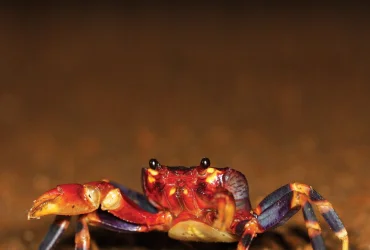 v7i1.163
v7i1.163ISSN: 1800-427X (print)
eISSN: 1800-427X (online)
DOI:10.47605/tapro.v7i1.163
Submitted date: 7 July 2014
Accepted date: 24 July 2014
Published date: 19 January 2015
Pp. 60–61.
On latex licking in the five-striped palm squirrel (Funambulus pennantii)
S.K. Sharma* & V.K. Koli
*Corresponding author. E-mail: sksharma56@gmail.com
The five-striped palm squirrel, Funambulus pennantii and three-striped palm squirrel, F. palmarum, consume liquid food in the form of nectar and latex in addition to solid food. The latexy secretion from the abaxial surface of the leaves at the junction of petiole and lamina of the leaves of the Banyan, Ficus benghalensis (Moraceae) is licked by both F. pennantii and F. palmarum as food. A scar is seen on the licked site of every leaf which appears to be a result of repeated licking and drying of the residue of the secretion.
Section Editor: Colin P. Groves
eISSN: 1800-427X (online)
DOI:10.47605/tapro.v7i1.163
Submitted date: 7 July 2014
Accepted date: 24 July 2014
Published date: 19 January 2015
Pp. 60–61.
On latex licking in the five-striped palm squirrel (Funambulus pennantii)
S.K. Sharma* & V.K. Koli
*Corresponding author. E-mail: sksharma56@gmail.com
The five-striped palm squirrel, Funambulus pennantii and three-striped palm squirrel, F. palmarum, consume liquid food in the form of nectar and latex in addition to solid food. The latexy secretion from the abaxial surface of the leaves at the junction of petiole and lamina of the leaves of the Banyan, Ficus benghalensis (Moraceae) is licked by both F. pennantii and F. palmarum as food. A scar is seen on the licked site of every leaf which appears to be a result of repeated licking and drying of the residue of the secretion.
Section Editor: Colin P. Groves
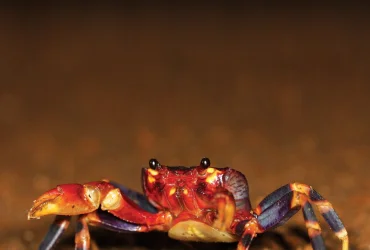 v7i1.162
v7i1.162ISSN: 1800-427X (print)
eISSN: 1800-427X (online)
DOI:10.47605/tapro.v7i1.162
Submitted date: 14 May 2014
Accepted date: 20 July 2014
Published date: 19 January 2015
Pp. 57–59, Pl. 23.
On the mating behaviour of captive Indian pangolin (Manis crassicaudata)
R.K. Mohapatra*, S. Panda, M. V. Nair
*Corresponding author. E-mail: rajesh.wildlife@gmail.com
The Indian pangolin, Manis crassicaudata is under serious threat due to hunting for local consumption and for international trade in skins, scales and meat, and to a lesser extent, loss and deterioration of its habitat. This species is listed as ‘Endangered’ and included under Appendix II of CITES. Because of their nocturnal, burrowing and secretive nature, information on their biology in the wild is very limited. They are difficult to maintain and rarely breed in captivity. Although several zoos have maintained this species, births in captivity have been reported by very few zoos: Calcutta zoo, Oklahoma zoo, Nandankanan Zoological Park. Although earlier studies have described nocturnal behaviour and activity pattern of Indian pangolins in captivity, observations on their mating behaviour are limited mainly because mating is seldom observed. This study reports on mating behaviour observed in captivity.
Section Editor: Colin P. Groves
eISSN: 1800-427X (online)
DOI:10.47605/tapro.v7i1.162
Submitted date: 14 May 2014
Accepted date: 20 July 2014
Published date: 19 January 2015
Pp. 57–59, Pl. 23.
On the mating behaviour of captive Indian pangolin (Manis crassicaudata)
R.K. Mohapatra*, S. Panda, M. V. Nair
*Corresponding author. E-mail: rajesh.wildlife@gmail.com
The Indian pangolin, Manis crassicaudata is under serious threat due to hunting for local consumption and for international trade in skins, scales and meat, and to a lesser extent, loss and deterioration of its habitat. This species is listed as ‘Endangered’ and included under Appendix II of CITES. Because of their nocturnal, burrowing and secretive nature, information on their biology in the wild is very limited. They are difficult to maintain and rarely breed in captivity. Although several zoos have maintained this species, births in captivity have been reported by very few zoos: Calcutta zoo, Oklahoma zoo, Nandankanan Zoological Park. Although earlier studies have described nocturnal behaviour and activity pattern of Indian pangolins in captivity, observations on their mating behaviour are limited mainly because mating is seldom observed. This study reports on mating behaviour observed in captivity.
Section Editor: Colin P. Groves
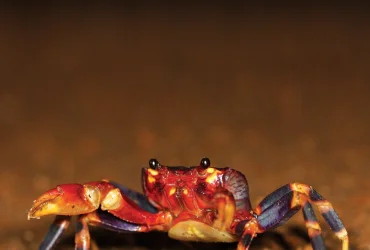 v7i1.161
v7i1.161ISSN: 1800-427X (print)
eISSN: 1800-427X (online)
DOI:10.47605/tapro.v7i1.161
Submitted date: 13 March 2014
Accepted date: 19 July 2014
Published date: 19 January 2015
Pp. 56, Pl. 22.
A nocturnal call of the black ibis (Pseudibis papillosa)
D.S. Shekhawat* & C. Bhatnagar
*Corresponding author. E-mail: sdeependrasingh@yahoo.com
During the night of 12 May 2013, in Udaipur city (24°31'30"N, 73°40'38"E), we heard a harsh sound that could not be associated with any animal. The following morning we observed a pair of black ibis (Pseudibis papillosa) with one juvenile on top of an Azadirachta indica (Meliaceae) tree which was the tallest among all nearby trees. We heard the same type of call for the next 13 days. Black ibis made this call between 24:00 h and 01:30 h each night. During these 13 days, we recorded all calls (of two birds) with the help of a Canon SX40 video camera and later conducted sound analysis to understand the structure of this unusual call. The video file was converted into WAVE audio file using Total Video Converter 3.02 software and analyzed with the help of Raven Pro 1.4 software.
Section Editor: Varadharajan Gokula
eISSN: 1800-427X (online)
DOI:10.47605/tapro.v7i1.161
Submitted date: 13 March 2014
Accepted date: 19 July 2014
Published date: 19 January 2015
Pp. 56, Pl. 22.
A nocturnal call of the black ibis (Pseudibis papillosa)
D.S. Shekhawat* & C. Bhatnagar
*Corresponding author. E-mail: sdeependrasingh@yahoo.com
During the night of 12 May 2013, in Udaipur city (24°31'30"N, 73°40'38"E), we heard a harsh sound that could not be associated with any animal. The following morning we observed a pair of black ibis (Pseudibis papillosa) with one juvenile on top of an Azadirachta indica (Meliaceae) tree which was the tallest among all nearby trees. We heard the same type of call for the next 13 days. Black ibis made this call between 24:00 h and 01:30 h each night. During these 13 days, we recorded all calls (of two birds) with the help of a Canon SX40 video camera and later conducted sound analysis to understand the structure of this unusual call. The video file was converted into WAVE audio file using Total Video Converter 3.02 software and analyzed with the help of Raven Pro 1.4 software.
Section Editor: Varadharajan Gokula
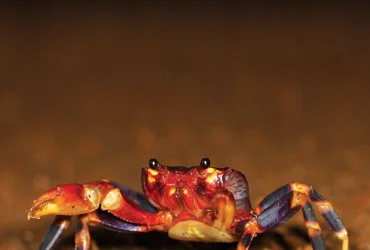 v7i1.160
v7i1.160ISSN: 1800-427X (print)
eISSN: 1800-427X (online)
DOI:10.47605/tapro.v7i1.160
Submitted date: 18 July 2014
Accepted date: 14 October 2014
Published date: 19 January 2015
Pp. 54–55.
Sarus Crane (Grus antigone) egg is hatched by a domestic hen
M. Sandeep, P. Srinivas, B.L Narayana* & D. Adimallaiah
*Corresponding author. E-mail: narayana.laxmi8@gmail.com
Nehru Zoological Park, Hyderabad, Telangana, India, has been involved in captive breeding programmes, including eggs of silver pheasant (Lophura nycthemera), red jungle fowl (Gallus gallus), kalij pheasant (Lophura leucomelanos) and golden pheasant (Chrysolophus pictus) incubated by domestic hen (Gallus gallus domesticus). It proved successful in almost all cases. Here, we attempted to do the same for the sarus crane (Grus antigone), which is listed in Schedule I of the Wildlife (Protection) Act 1972, vulnerable species on IUCN Red List 2012, Appendix II of CITES, and Appendix II of the Convention on Migratory Species. It is the largest bird in India and the tallest flying bird in the world.
Section Editor: Varadharajan Gokula
eISSN: 1800-427X (online)
DOI:10.47605/tapro.v7i1.160
Submitted date: 18 July 2014
Accepted date: 14 October 2014
Published date: 19 January 2015
Pp. 54–55.
Sarus Crane (Grus antigone) egg is hatched by a domestic hen
M. Sandeep, P. Srinivas, B.L Narayana* & D. Adimallaiah
*Corresponding author. E-mail: narayana.laxmi8@gmail.com
Nehru Zoological Park, Hyderabad, Telangana, India, has been involved in captive breeding programmes, including eggs of silver pheasant (Lophura nycthemera), red jungle fowl (Gallus gallus), kalij pheasant (Lophura leucomelanos) and golden pheasant (Chrysolophus pictus) incubated by domestic hen (Gallus gallus domesticus). It proved successful in almost all cases. Here, we attempted to do the same for the sarus crane (Grus antigone), which is listed in Schedule I of the Wildlife (Protection) Act 1972, vulnerable species on IUCN Red List 2012, Appendix II of CITES, and Appendix II of the Convention on Migratory Species. It is the largest bird in India and the tallest flying bird in the world.
Section Editor: Varadharajan Gokula
Hubungi Kami
The ultimate aim of the journal is to provide an effective medium for communication of the latest and best scientific information.
Copyright © 2020 Taprobanica. All Rights Reserved
Jasa Pembuatan Website by IKT




